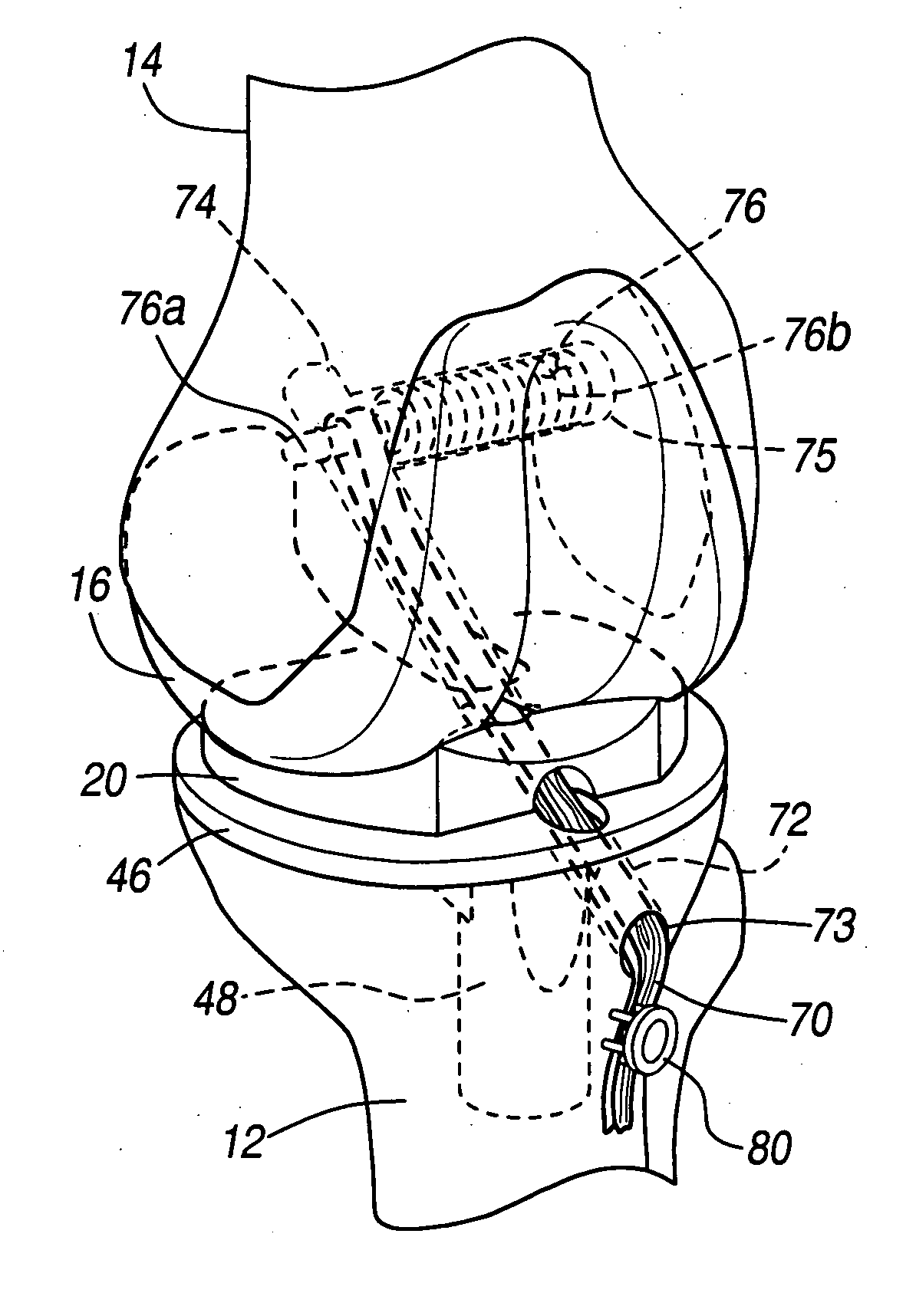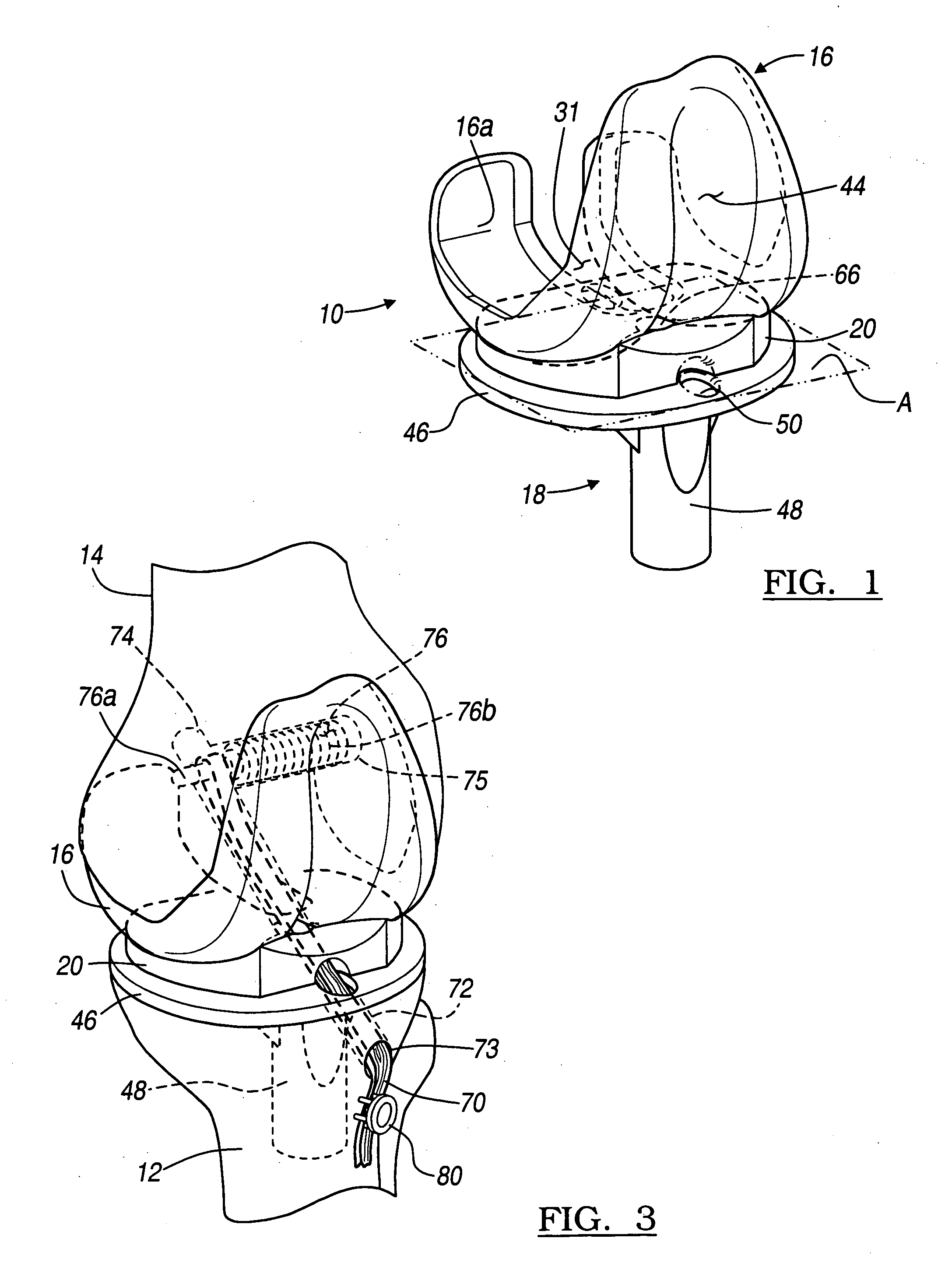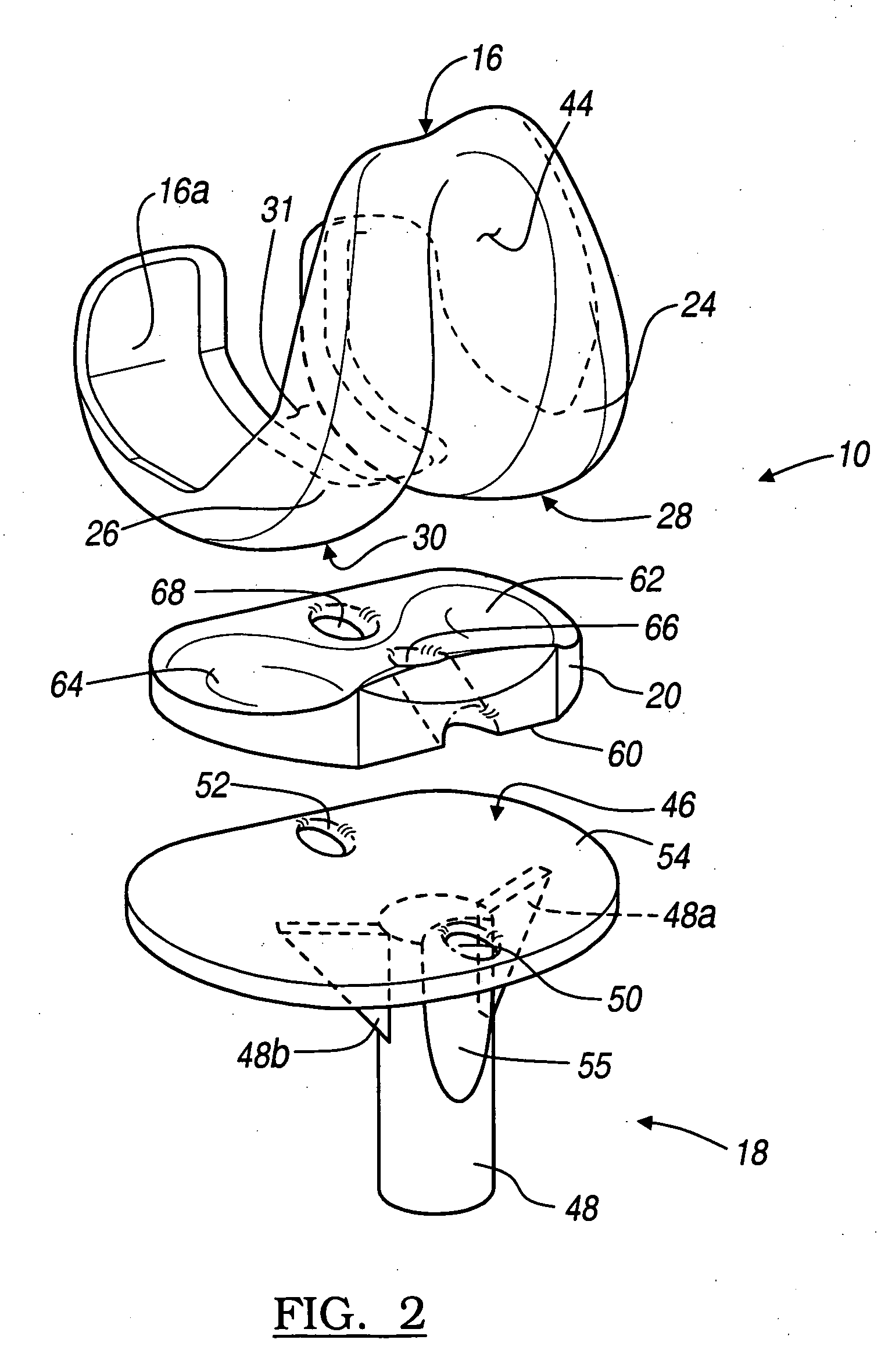Integrated prosthetic assembly
a prosthetic and integrated technology, applied in the field of integrated prosthetic assemblies, can solve the problems of general difficulty and reduce the choice of surgeons
- Summary
- Abstract
- Description
- Claims
- Application Information
AI Technical Summary
Benefits of technology
Problems solved by technology
Method used
Image
Examples
Embodiment Construction
[0035] The following description of various aspects concerning a floating bearing and a posterior stabilized fixed bearing knee joint replacement with a transplanted biologic ligament are merely exemplary and are not intended to limit the invention or its application or uses. It will be understood that the present invention may be practiced with any knee prosthetic to attach a graft between the femur and the tibia. That is, the procedure and invention of using a graft with a prosthetic knee joint may be used with any prosthetic knee joint such as a fixed bearing or floating bearing with a cruciate retaining knee. Moreover, the biological ligament may be any biological ligament or synthetic ligament that simulates a biological ligament.
[0036] Referring to FIGS. 1-2, a cruciate retaining floating bearing knee joint prosthesis or knee prosthetic 10 is shown in accordance with the teachings of the present invention. The knee prosthetic 10 is designed to be used when a graft to replace ...
PUM
 Login to View More
Login to View More Abstract
Description
Claims
Application Information
 Login to View More
Login to View More - R&D
- Intellectual Property
- Life Sciences
- Materials
- Tech Scout
- Unparalleled Data Quality
- Higher Quality Content
- 60% Fewer Hallucinations
Browse by: Latest US Patents, China's latest patents, Technical Efficacy Thesaurus, Application Domain, Technology Topic, Popular Technical Reports.
© 2025 PatSnap. All rights reserved.Legal|Privacy policy|Modern Slavery Act Transparency Statement|Sitemap|About US| Contact US: help@patsnap.com



